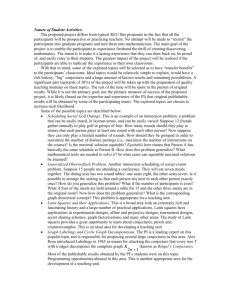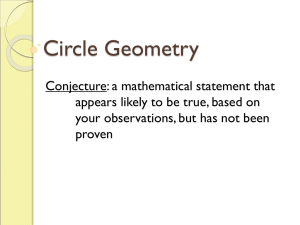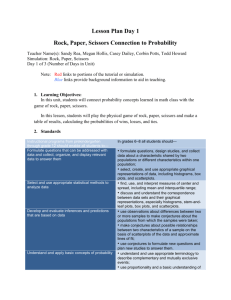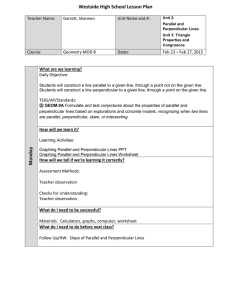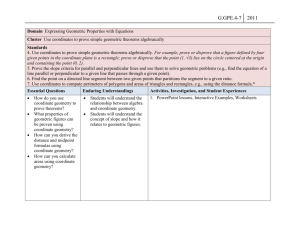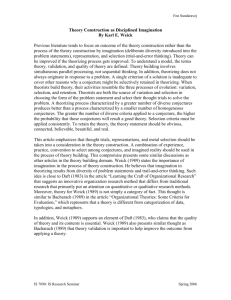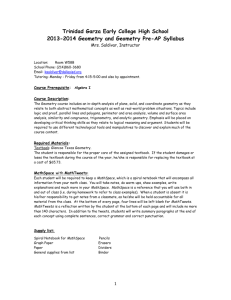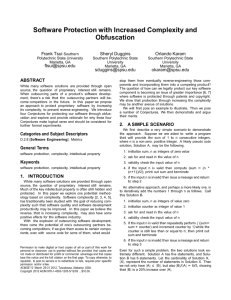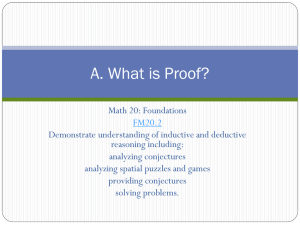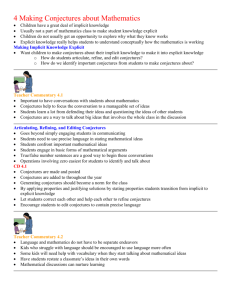I. Prove your conjectures.
advertisement
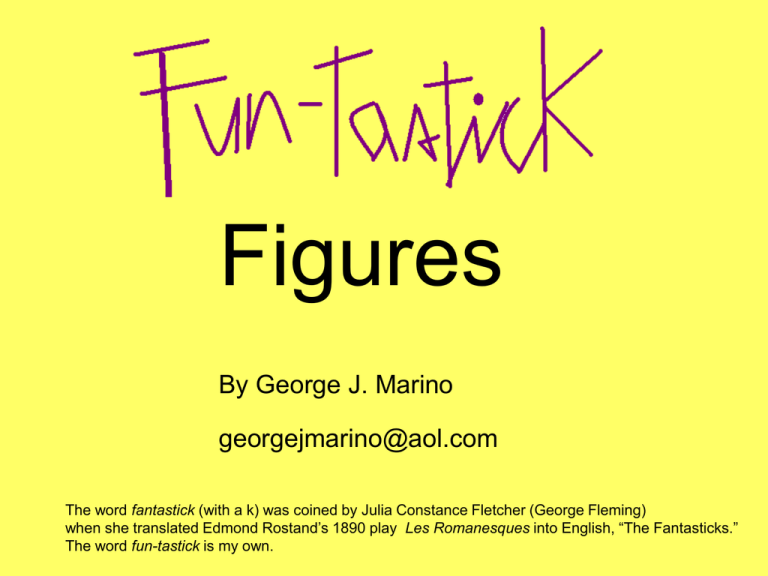
Figures By George J. Marino georgejmarino@aol.com The word fantastick (with a k) was coined by Julia Constance Fletcher (George Fleming) when she translated Edmond Rostand’s 1890 play Les Romanesques into English, “The Fantasticks.” The word fun-tastick is my own. Imagine creating a new geometric figure. It is all yours. You can name it. You can name its parts. You can make conjectures. You can test your conjectures and prove some of them. You can experience the full range of geometric activities. Yes this is possible. Imagine creating a new geometric figure. It is all yours. You can name it. You can name its parts. You can make conjectures. You can test your conjectures and prove some of them. You can experience the full range of geometric activities. Yes this is possible. And this uses ALL of the Illinois Learning Standards of Mathematics that apply to Geometry. C. H. Jackson patented this In the 1860’s. It is used today. What is it ? Put the halves together. Curves of Constant Width Curve of Constant Width The latter is a British 50 pence piece This can be constructed on Geogebra or Geometer’s Sketchpad. Constructing lizards Home Plate Exploring a New Figure A. Name it. B. Find examples of it in art, science, nature, or literature. (Research it on the internet.) C. Name its parts D. Construct it on a Dynamic Geometry System. E. Select parts and move them to see if the figure is what is desired. F. Write a definition of the figure. G. Measure the parts on your Dynamic Geometry System. H. Make Conjectures. (Consider congruencies, area, perimeter, symmetries the ability to tessellate the plane.) I. Prove your conjectures. Best is a figure discovered by a student. A. Name it. The Brouch (My student, Jennifer Brouch, wanted it named after her.) B. Find examples of it in art, science, nature, or literature. (Research it on the internet.) B. Find examples of it in art, science, nature, or literature. (Research it on the internet.) I could not find one… B. Find examples of it in art, science, nature, or literature. (Research it on the internet.) Until I used Google, pressing the IMAGE tab. You can google an image! I found the following by searching “two semicircles.” In a leisure park there are three running tracks, all with the same Start and Finish, and all made from either one or two semicircles with centres on the same line. Three runners P , Q and R start together at the Start and run at the same constant speed along the tracks shown. In what order do they finish? Problem 13, 2006. NRICH Project Dividing a circle’s circumference into 7 equal parts is an impossible Euclidean construction – like trisecting an angle. There is a way of dividing a circular region into 7 equal parts From CTN Insights (a blog) C. Name its parts. Parts of a Brouch Puzzle Make a brouch out of these four figures. Hint: use green for subtraction. Describe the transformations that would convert this into a brouch. D. Construct it on a Dynamic Geometry System Construction E. Select parts and move them to see if the figure is what is desired. Move Parts F. Write a definition of a brouch. G. Measure the parts on your Dynamic Geometry System. Measure H. Make conjectures. Remember this problem? In a leisure park there are three running tracks, all with the same Start and Finish, and all made from either one or two semicircles with centres on the same line. Three runners P , Q and R start together at the Start and run at the same constant speed along the tracks shown. In what order do they finish? H. Make conjectures. Area of a Brouch Area I. Prove your conjectures. Given: Brouch AH Prove: Brouch AH = π (R2 – r2) Your Turn … georgejmarino@aol.com

